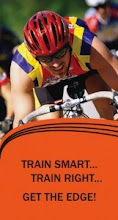Numbers You Can Trust
For a foxy figure faster, count on these weight-loss formulas
Blake Miller
We don't know who coined the phrase "Numbers don't lie," but we'll bet they never counted a calorie. And if you've ever tried using math to manage the digits on your bathroom scale, you know that most diet equations don't add up. We wondered whether any of the roughly 338,000 Google hits for "weight loss formula" can actually help you look good in that black latex cat suit this Halloween. Here's the lowdown on three basics:
Daily Caloric Requirement (DCR)
Translation The math is pretty simple: Eat 500 fewer calories a day than your body requires and you'll drop a pound a week. But most online calculators (and even the pen-and-paper variety) are only 82 percent accurate (even less so if you're obese, sick, or an ethnic minority), according to the American Dietetic Association. And, says Mary Hartley, a registered nutritionist for about.com, the results can be flawed because the equation isn't tailored to the individual and because many people misjudge their fitness level. Plus, if you lose 10 pounds or more, you'll have to do the math again.
Salvation Let sites like caloriecount.about.com, mayoclinic.com, or mypyramid.gov do the work for you. All factor in activity level and are backed by health pros.
Resting Metabolic Rate (RMR)
Translation While DCR calculates calorie input (how much you need to eat), the Resting Metabolic Rate tabulates calorie output (how much you burn doing absolutely nothing). Unfortunately, the ADA says the accuracy of these formulas is 45 to 80 percent (and again, they're less accurate if you're obese).
Salvation Skip the formula and get tested by a pro; you can do this at many gyms (members pay about $50). You'll have to sit and breathe into a scubalike plastic tube while a computer records how much oxygen you inhale and how much carbon dioxide you exhale. After 12 minutes of fun, you get a printout showing you (with 95 percent accuracy) how much you burn at rest and how many cals you can consume and still ditch your saddlebags.
VO2 Max
Translation This test, often used by athletes who train for grueling events, can also be useful for noncompetitors looking to lose weight, because the result helps pinpoint a target heart rate for fat burn. The formula is nearly 100 percent accurate, as long as you don't flub the test, which requires you to run or bike at top speed, typically for 12 to 14 minutes, while wearing a gas-mask-like apparatus that measures your oxygen intake. An ill-fitting mask (it should seal around your mouth) or not reaching your peak speed on the treadmill can skew the results.
Salvation Search at vo2max testing.net for places that provide the test, which costs about $120. The test will tell you the amount of calories you burn in different heart-rate zones. Once you get your results, invest in a heart rate monitor--either one that straps around your chest (the most effective) or a watch (like the MioMotiva)--to keep tabs on your ticker as you work out within your ideal fat-blasting range.
For more information about Metabolic Testing or to schedule a test please feel free to contact me.
Monday, February 2, 2009
Women's Health Magazine talks abouts the importance of Metabolic Testing
Subscribe to:
Post Comments (Atom)





No comments:
Post a Comment